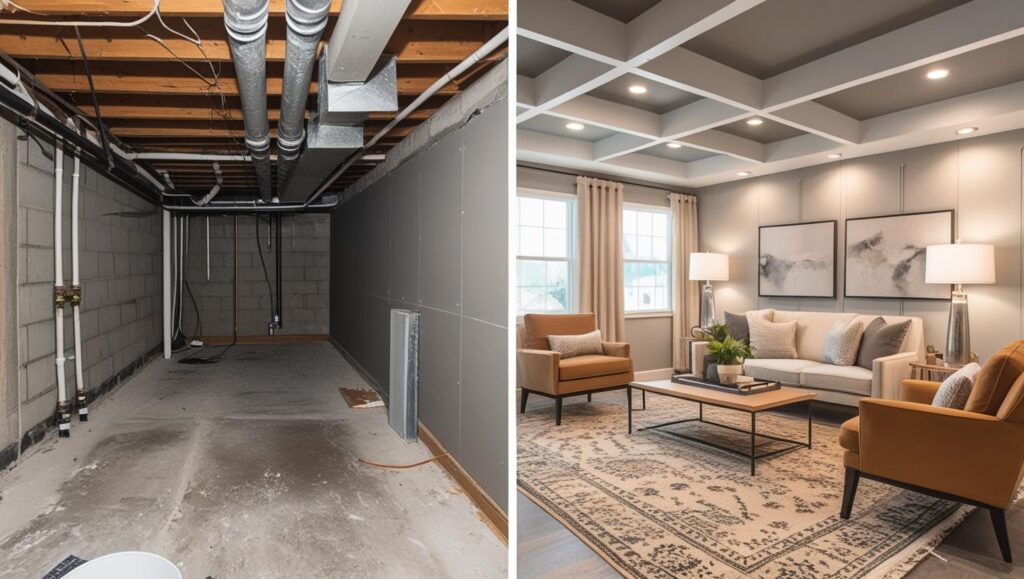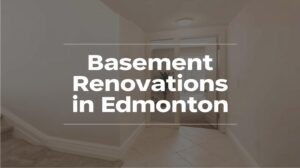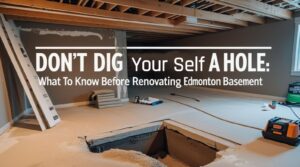Winter-Proofing Your Basement: Edmonton Renovation Tips for Winter
Edmonton winters are long, cold, and unforgiving. As temperatures plunge and snow blankets the city, your home becomes your primary shelter from the harsh elements. One area that often goes overlooked until problems arise is the basement. Winter-proofing your basement is not just about comfort—it’s about preventing damage, improving energy efficiency, and protecting your investment. In this article, we’ll explore essential winter-proofing techniques and practical basement renovation tips designed specifically for Edmonton’s unique climate.
Why Winter-Proofing Is Important in Edmonton?
With below-zero winter temperatures averaging below -20°C and frost going deep into the ground, Edmonton house have issues that do not occur in more temperate climates. The basement, which is partly or entirely below ground level, is especially vulnerable to heat loss, water entry, and moisture issues. Failing to do something about this area will result in exorbitant bills, mold formation, and damage to the structure itself.
A proactive approach to basement renovation in Edmonton is key. Whether you’re finishing your basement for additional living space or simply aiming to protect your home’s foundation, winter-proofing is an essential step in the renovation process.
1. Insulate Walls and Floors Properly
The initial defense against cold is effective insulation. Most older homes in Edmonton lack basement insulation or employ old technology that no longer works. Rigid foam board insulation, spray foam, or mineral wool can greatly enhance thermal resistance (R-value) to keep your basement warm and dry.
When insulating walls, always include a moisture barrier to avoid condensation between the insulation and concrete. In floor insulation, install subfloor systems with thermal breaks and vapor barriers to reduce cold air transfer from the ground. Using carpeting over insulated subfloors can also enhance comfort.
2. Seal Cracks and Gaps
Even minute cracks in your basement foundation or windows and doors can let in cold air, moisture, and insects. Check all areas before winter arrives for any damage or air leaks.
Seal gaps between windows, doors, and plumbing penetrations using polyurethane caulking. For bigger cracks in concrete walls and floors, use a hydraulic cement or an epoxy injection sealant. Sealing your basement not only saves energy but also limits the possibility of spring melt water intrusion.
3. Replace Windows and Window Wells
Basement windows tend to be the most vulnerable area for heat loss and water penetration. If your basement is still outfitted with single-pane or older aluminum-framed windows, consider replacing them with double- or triple-pane varieties that are coated with low-E coatings and insulated frames.
Window wells need to be properly drained and domed to avoid snow and rainwater buildup against the foundation. A well-drained window well with an effective drainage system avoids freezing water intrusion into the basement during Edmonton’s common freeze-thaw cycle.
4.
Install a Sump Pump and Backup System
Water damage is not only a springtime issue. Snowmelt on warmer winter days can soak the ground and cause flooding in your basement. A sump pump is a necessary tool for sending this water away from the foundation of your home.
To winterize your system, make sure the discharge line is also winterized and doesn’t drain into a location where water can freeze up and clog. Having a battery backup system in place makes your sump pump function even during a power outage, which is not unusual during Edmonton’s winter storms.
5. Enhance Ventilation and Control Humidity
Dry winter air does not mean basements are immune to excess moisture from poor ventilation and routine activities such as doing laundry or operating appliances. Winter moisture buildup causes cold surfaces to condense, fostering mold and ruining finishes.
Install a dehumidifier intended for basement application and provide adequate ventilation through vents or an HRV (heat recovery ventilator) system. If your basement has a laundry room or bathroom, ensure these rooms have exhaust fans which ventilate directly outside.
6. Insulate Pipes from Freezing
Frozen pipes are a homeowner’s worst nightmare, and basements are a typical problem area. To avoid pipe bursts in below-zero temperatures:
Wrap all exposed pipes in foam pipe sleeves or fiberglass wrap.
Seal any gaps around pipes with caulk or spray foam.
Maintain basement temperature to at least 10°C at all times, particularly in vacant or infrequently occupied houses.
In your Edmonton basement renovation, consider moving pipes away from exterior walls or encasing them in insulated chase walls.
7. Use Cold-Resistant Materials
When completing a basement in Edmonton, material selection is more crucial than you may realize. Materials have to endure temperature fluctuations, humidity, and possible flooding.
Employ water-resistant drywall (e.g., green board or mold-resistant panels), moisture-sealed tile or vinyl flooring, and pressure-treated wood framing. Exclude organic materials such as untreated wood or carpeting with jute backing, which are most prone to mold and rot.
8. Install Zoned Heating or Supplemental Heat Sources
Most basements are inherently cooler than higher floors. If your primary heating system is having a hard time warming the basement, think about installing a separate heat source. Possibilities are:
Electric baseboard heaters
In-floor radiant heating
Ductless mini-split systems
Zoning lets you heat independently and effectively, maintaining the area cozy without overworking your furnace.
9. Test for Radon and Fix Air Quality
Cold air means windows are closed for more hours at a time, which can create stale air. Radon, a naturally occurring radioactive gas in soil, is a special problem in basements.
Test for radon with a do-it-yourself kit or hiring a professional service. If high levels are discovered, the installation of a radon reduction system as part of your basement renovation in Edmonton is a wise and health-enlightened decision. Maintaining better air quality also involves routine HVAC upkeep and proper building envelope sealing.
10. Prepare for Emergency Access and Safety
In a complete basement, safety is always a concern. Make sure each bedroom has an egress window that complies with Edmonton building code for fire protection. Mount smoke and carbon monoxide detectors and tie them into the rest of the home’s system.
Power outages and obstructed exit routes due to winter storms also need to be prepared for, so emergency lighting and clear escape routes are important, particularly in larger or completely below-grade basements.
Conclusion
Edmonton’s winters may be intense, but your basement doesn’t have to be a cold, damp, and forgotten space. With proper planning and smart upgrades, winter-proofing your basement can enhance comfort, lower energy costs, and prevent costly damage. Whether you’re starting fresh or updating an older home, these renovation tips are designed with Edmonton’s unique challenges in mind. Investing in a worthy basement remodel worthy of Edmonton not only adds your house’s usable square footage but also safeguards its structural integrity and long-term value. As the weather gets colder, don’t wait for issues to arise—act now and have your basement become a cozy, secure, and energy-efficient area of your home this winter.





